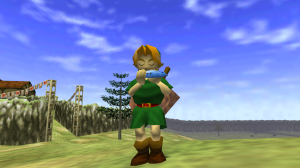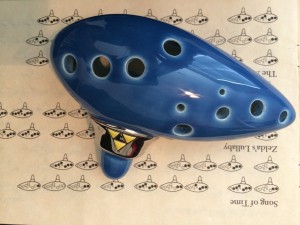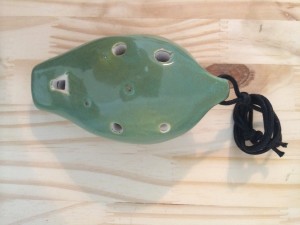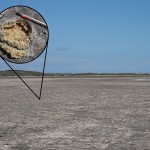I wrote this article in 2009 for another website I was running at the time. In this article, I cover my experiences with the ocarina, the history of the ocarina, selecting (or making) an ocarina, and how to play an ocarina.
At a renaissance festival, a musician lured me with whimsical melodies using a strange whistle-like device. Enchanted, I hovered over to her stand, where I discovered that she and her sister made ocarinas for a living, to my great surprise, because, although I had played The Legend of Zelda: Ocarina of Time, I never knew such instruments actually existed. A diehard Zelda fan and a lover of music, I stood staring at the shiny ocarinas of all shapes and sizes on the counters.
I fingered a lovely green six-hole ocarina, a small swirl on its underside between two thumbholes. "How much does this one cost?" I asked. The woman, dressed in simple peasant clothing, replied, "Sixty dollars."
She continued playing her ocarina. Suddenly, I noticed the breeze and the sun, the smell of the trees. As fairies and heroes passed me by, I imagined myself in a long green summer dress, prancing through meadows, playing my ocarina. Now I rode a dark black horse bareback, playing my ocarina as we galloped down the seashore. I slipped into the ocarina’s necklace, held the instrument in my hands.
Sixty dollars, the number glared at me in my mind’s eye. A commoner such as I would need a few hours to work off that amount. I wavered.
Children flocked to the stand with wide eyes, listening intently to the sisters as they played together on the ocarinas. Their parents would occasionally inquire about the ocarinas. "How did you get started making these for a living?" A businessman, dressed as a knight, would enviously ask.
Soon, the dollar sign faded into the music of the ocarinas and the general murmuring of the environment. People long ago believed this tiny wind instrument, almost as old as human history itself, had magical powers and conjure spirits. I extracted sixty dollars, selected a free songbook to go with it, and escaped with my beautiful ocarina swinging from my neck. I wondered if the Pied Pipers, as they called their business, often used the magic of the ocarinas to lure money from the pockets of unsuspecting pedestrians.
I thought the two hour drive home the perfect opportunity to sharpen my ocarina skills. "Somewhere over the rainbow," my fingers danced and the little wind instrument sang, much to the joy of everybody sharing the car with me. "Hey, Jude..."
A Brief History
For a more extensive history of the ocarina, visit Songbird Ocarina.
For thousands of years, cultures on almost every continent credited the ocarina with supernatural powers. Ocarinas held key roles in religious rituals, courtship, burials, royal affairs, protection, and entertainment. Although these bygone civilizations left virtually no writing behind about ocarinas, different ocarinas apparently served specialized purposes, as inferred by their shapes and sounds. For example, among ocarinas sculpted in the likenesses of males and females, the males typically make deeper sounds. Other ocarinas seem to imitate birds.
Today, scientists doubt their magical abilities, but in-depth analysis of the instruments, using x-rays and other advanced techniques, have revealed much more sophistication than previously believed. Ancient ocarinas, usually constructed of clay or bone, featured beautiful construction, quality tones, and in some cases, complex internal chambers. Indeed, modern ocarina craftspeople can attest to the exceptional skill required to hand create a beautiful, functional ocarina.
European travelers, returning home from tours to South America, reintroduced the ocarina to Europe, where musicians adjusted it to fit the Western musical scale. Throughout the nineteenth century, ocarina ensembles formed in Italy as the instrument gained popularity; in fact, the word “ocarina” means "little goose" in Italian. Later, American soldiers serving in World War II enjoyed playing ocarinas to pass the time. About forty years ago, John Taylor coaxed an entire octave from the ocarina using four holes. Nearly thirty years after this innovation, two thumb holes added to the ocarina’s underside further increased its range.

The Ocarina of Time commanded special powers, helping Link progress through the game to save Hyrule from destruction.
However, despite these breakthroughs, the ocarina remained fairly unknown. That changed in 1999, though, with the release of now-classic Nintendo 64 game The Legend of Zelda: Ocarina of Time. Manipulating the controller to produce different notes, gamers could make hero Link play the sacrosanct Ocarina of Time to the tunes of acclaimed composer Koji Kondo, who also wrote the famous Super Mario Brothers theme. Certain songs commanded special powers, helping Link progress through the game to save the universe from destruction. The beautiful landscape of Hyrule, with mountains, fields, rivers, and forests, swept gamers to a different world. Gamers continue to revere music from the game.
Following the game’s continuing critical and commercial success, ocarina makers reported exponential increases in demand for the instrument, as gamers clamored for replicas of the Ocarina of Time, with its golden triangle adorning the mouthpiece and its trademark blue color. Ocarinas, virtually unheard of prior to Time, became a household word for many.
Selecting an Ocarina
YouTube user docjazz4 created an extensive collection of videos about ocarinas, including a guide to choosing a first ocarina and reviews about ocarinas he owns. You can visit his YouTube profile to access his videos. His guide for choosing a first ocarina follows:
Au Naturel: Vegetable Ocarinas
YouTube user heita3 specializes in creating ocarinas out of various vegetables, including carrots, broccoli, apples, and cabbages. His YouTube profile contains videos of different veggie-ocarinas. His tutorial on creating a carrot ocarina follows. Only adults should attempt this method, and please use caution when handling the tools. Although these ocarinas will eventually decay, you can make one for free and even eat the scraps as you work, as heita3 demonstrates in his video.
Creating a Clay or Ceramic Ocarina
If you want to make your own ocarina out of clay or ceramic, be warned that it requires a few special tools and a high fire kiln. You can purchase a small kiln for a couple thousand dollars. However, most colleges have kilns, so you might want to see if your local community college will let you use it, or if you can take clay or ceramic courses there. Kenji Ogawa has an online tutorial for creating a simple clay ocarina.
Reading Ocarina Tabs
Most people can start playing songs on the ocarina without much practice or prior musical experience, because fingering charts simplify the process by removing musical notation and the need to understand which finger combinations create which notes.
White, empty circles signify to leave those holes on the ocarina uncovered or open. Black, filled holes signify to cover those holes on the ocarina with your finger.
Instead, a picture of an ocarina shape has small circles on it, equal to the amount of holes on the ocarina meant for use with the tablature. Circles located directly below the ocarina shape represent thumb holes. White, empty circles signify to leave those holes on the ocarina uncovered or open. Black, filled holes signify to cover those holes on the ocarina with your finger. Each ocarina shape represents one note. Play each note once in succession.
With this method, however, the disadvantage comes in timing. You will need to know the song beforehand in order to time the notes you play.
Ocarina Tabs
Songbird Ocarina Composer offers an excellent resource for ocarina tabs at their online composer.
Visitors donate tabs they have figured out using a simple form, and the tabs add automatically. With this free flow of information, the composer has tons of tabs for many songs. However, a few dud tabs and many repeats (with slight variations) exist. Finally, this site only has tabs for four-, five-, or six-hole ocarinas.
Unfortunately, few other extensive ocarina tab sites exist at the moment. Additionally, ocarina tabs almost always refer to four-, five-, or six-hole ocarinas; the tabs for all three kinds are virtually the same, with thumbholes accounting for the differences. So, if you need to find a particular song or have a special ocarina, you would probably do best to simply search for "my song tab #-hole ocarina", of course, replacing "my song" with the name of your song and "#" with the number of holes on your ocarina. Hopefully, if somebody posted that tab somewhere, you will find it.

I couldn't resist getting this Songbird Limited Edition Ocarina of Time Replica. The ocarina rests on a songbook included with the instrument.
White, empty circles signify to leave those holes on the ocarina uncovered or open. Black, filled holes signify to cover those holes on the ocarina with your finger.
For those seeking hardcopy tabs on paper, ocarina songbooks provide a solution. Ocarina makers typically offer songbooks with tabs for different songs. A quick search for "ocarina songbooks" on any regular search engine or shopping search engine should give you a decent list of books for sale. If you want a specific song, include the name of the song in your search to narrow down the results. Usually, the book’s description will tell you what songs and lessons to expect.








